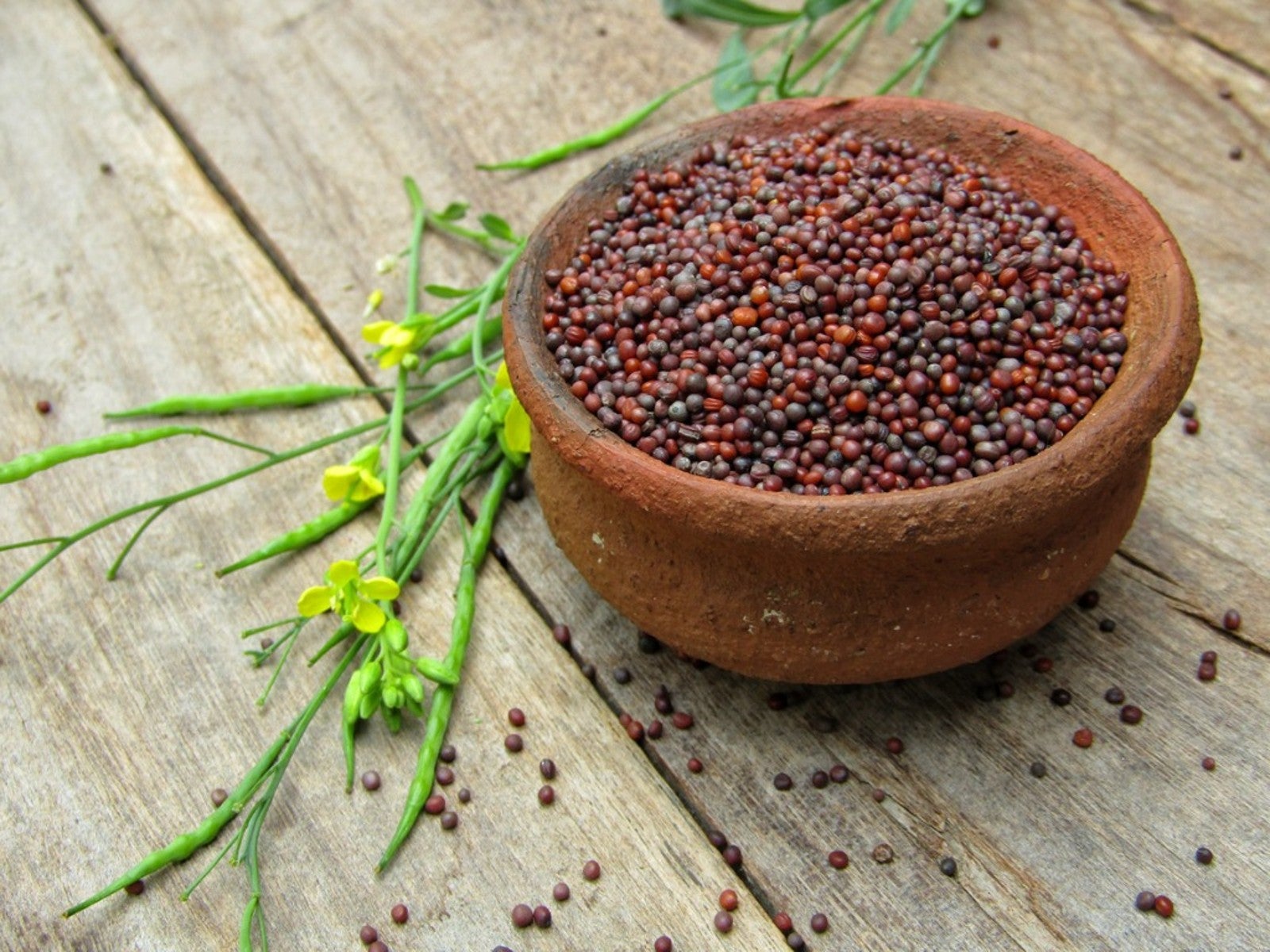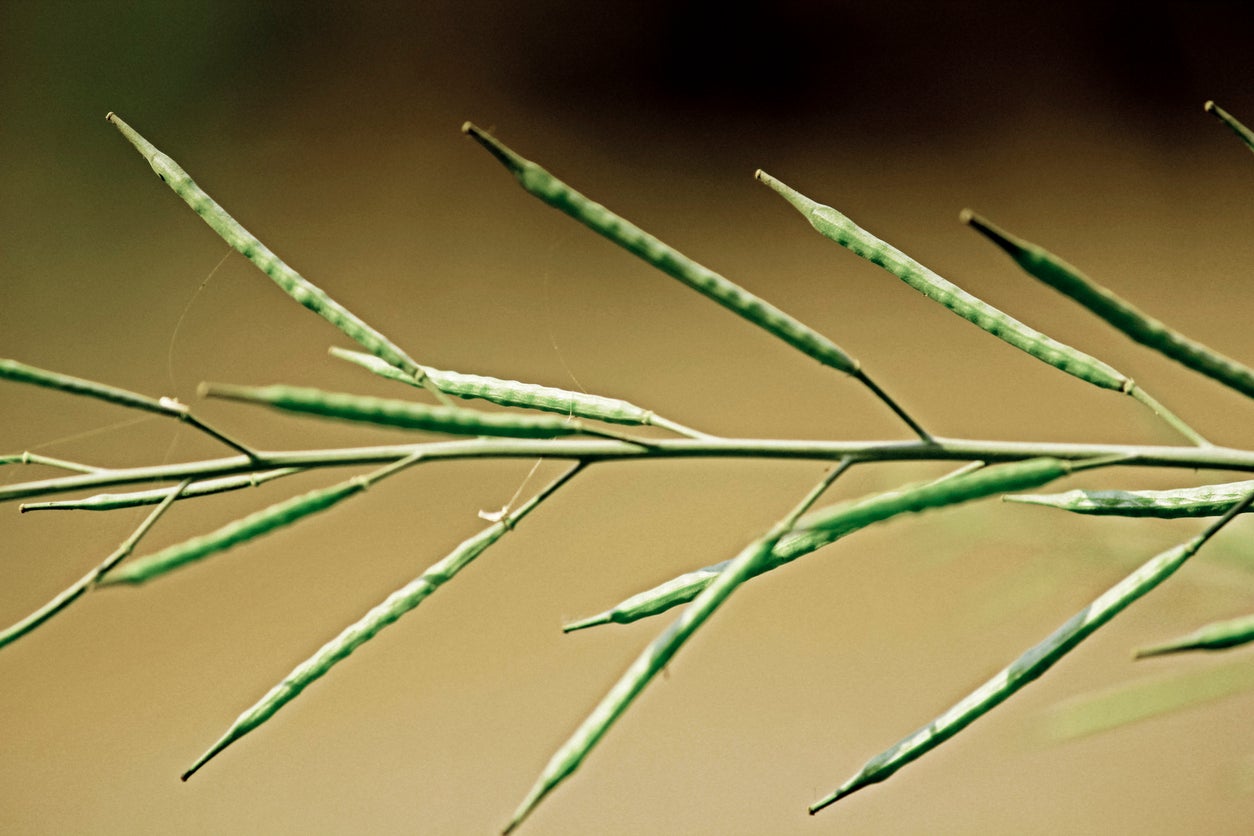Mustard Seed Harvest, Storage, And Uses


August 6 is National Mustard Day. It's America's favorite hot dog condiment, and US consumers purchase approximately 40 million pounds of mustard per year. But did you know the same plants gardeners grow for mustard greens can be used to produce this condiment? Once these plants bolt, gardeners can collect and make good use of mustard seeds.
Two Crops from Mustard Plants
Like many spring crops of leafy green vegetables, mustard has a tendency to bolt once warm weather arrives. The bright yellow flowers are hard to miss, but don't immediately yank out these plants. There are many uses for mustard seeds:
- White mustard (Brassica alba/hirta) – Cultivated commercially for the production of yellow mustard, the mild-flavored seeds are a light tan color. These mustard seeds can be found in pickling spice mixes and ground for mustard powder. The powder can be used in mayonnaise, salad dressings and dry rubs for meat. This species is sometimes called Sinapis alba and the seeds may also be referred to as yellow mustard.
- Oriental mustard (Brassica juncea) – These bright yellow seeds are used to make hot, spicy Chinese mustard for egg rolls. They have the hottest flavor. Additional oriental mustard seed uses include hot pickling spice, flavored vinegars, and spicy rubs for meat.
- Brown mustard (Brassica juncea) – The dark brown seed coat distinguishes these varieties of mustard from the oriental types. Used in Dijon and English style mustards, brown mustard seeds are spicier than white varieties. They are also used for pickling and in hot sausage.
When to Harvest Mustard Seeds
Collecting your own mustard seeds is not difficult. When growing mustard as a leafy-green crop, allow the plants to bolt and produce seed pods. Keep the plants watered during this period to increase seed production.
When planting mustard for seed production, expect white mustard plants to mature in 80 to 85 days. B. juncea varieties require an additional 10 days. Pick mustard seeds when the pods turn brown and the leaves of the plants begin to yellow. Waiting too long to harvest results in the pods being so brittle they shatter when removed from the plant.
Once the pods are harvested, the seeds can be extracted by crushing the pods with gloved hands or by placing them in a paper bag and shaking. If the pods don't shatter easily, allow them to dry in the paper bag for another week or two. Use a sieve or fan to separate the chaff from the seeds.
How to Store Mustard Seeds
Whole seeds can be used fresh in recipes, but additional drying time may be needed before storing or grinding mustard seeds. To test for dryness, crush the seeds with a pestle or small hammer. If the seeds shatter easily, they are sufficiently dry. If more drying time is needed, spread the seeds on a paper-lined tray and place in an undisturbed, dry location.
Once the seeds are sufficiently dry, powdered mustard can be made by crushing the seeds using a food processor or pestle and mortar. For the best flavor, use ground mustard within six months. Whole mustard seeds will remain potent for about a year when stored at room temperature in airtight plastic or glass containers.
Gardening tips, videos, info and more delivered right to your inbox!
Sign up for the Gardening Know How newsletter today and receive a free copy of our e-book "How to Grow Delicious Tomatoes".

Laura Miller has been gardening all her life. Holding a degree in Biology, Nutrition, and Agriculture, Laura's area of expertise is vegetables, herbs, and all things edible. She lives in Ohio.
-
 Looking For Plants To Give You The Soft And Fuzzies? Try These 5 Fuzzy Leaf Plant Options
Looking For Plants To Give You The Soft And Fuzzies? Try These 5 Fuzzy Leaf Plant OptionsLovers of texture, drama, silver foliage and tactile plants will adore these special sensory garden additions. These fuzzy leaf plant options will leave you all aglow
By Susan Albert
-
 Get Ready For A Summer Of Hummers! Grow These Full Sun Hummingbird Plants and Flowers
Get Ready For A Summer Of Hummers! Grow These Full Sun Hummingbird Plants and FlowersIf you’re lucky enough to enjoy a sunny backyard, make sure you are maxing out on your pollinator opportunities and grow these full sun hummingbird plants and flowers
By Tonya Barnett
